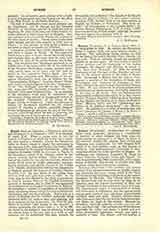

Burgoa, FRANCISCO, b. at Oaxaca about 1600; d. at Teopozotlan in 1681. He entered the Dominican Order August 2, 1629, and soon became master in theology. The voluminous books written by him on the past of his native Mexican State, Oaxaca, are very rare. They are valuable, though not absolutely reliable on several topics. He was curate of several Indian parishes and his knowledge of the Indian languages, the Zapotec and Mixteco, is stated to have been very thorough. In 1649 he became Provincial of the Province of San Hipolito and took part in the chapter general of his order at Rome, 1656. Returning to Mexico with, the title of vicar-general, a member of the Inquisition of Spain, and Commissary and Inspector of Libraries of New Spain (Mexico), he again became Provincial of Oaxaca in 1662. He was interested in several ecclesiastical foundations and improvements, and highly respected at the time of his death. The two historical and geographical works through which he is best known are the “Palestra historica, o Historia de la Provincia de San Hipolito de Oaxaca, de la Orden de Predicadores” (Mexico, 1670), and the “Description geografica de la America setentrional” etc. (Mexico, 1674). He published a number of sermons and also wrote “Itinerario de Oaxaca a Roma y de Roma a Oaxaca”, which is still in manuscript.
AD. F. BANDELIER

